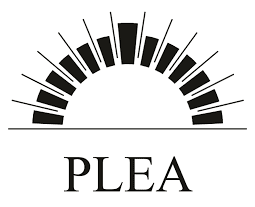Dear PLEA friends,
This is just a thought as you may be now going on to design very low energy buildings – for practice, projects or competitions. Obviously the longer one can run a building on free local, natural energy the less the energy you have to import into a building through pipes and wires, and the lower the carbon impact of that building. So a key indicator or a truly low energy building must be how much of a day or year it can be run with resorting to mechanical systems. I had been concerned that while some of us like to design Star Wars fashion (May the Force be with Us) – others like to nail down calcs for every step of the process. So windows in many locations may need a) security grills or screens (the Japanese are wonderful at these) and b) insect or fly screens.
I was very grateful to Mark deKay for sending around these two excellent document on natural ventilation design (basic physics does not change over time so they may appear dated but are very sensibly practical guides) that include calcs for screens and grilles:
Ventilation and screens:
Subrato Chandra’s 1987 report for the Florida Solar Energy Center, “Procedures for Calculating Natural Ventilation Airflow rates in Buildings” uses the “Vickery algorithm” for calculating special cases, including insect screens.
PDF here: http://www.fsec.ucf.edu/en/publications/pdf/fsec-cr-163-86.pdf
A more illustrated version that includes more issues and worksheets for the sizing method is in Chandra, et al’s “Cooling With Ventilation” (1986) and available here:
https://publications.energyresearch.ucf.edu/wp-content/uploads/2018/06/FSEC-CR-1658-86.pdf
Of course fans are going to be ever more important for stepped cooling systems (eg, open wind – fan – AC) and Big Ass Fans recently drew my attention to their excellent Fan site…. of which I am now a fan: https://guide.bigassfans.com/
Berkeley has a great Guide for designing ceiling fans: https://escholarship.org/uc/item/6s44510d
and an in-browser web tool to help folks do some quick design sizing/selection for ceiling fans in spaces, available here: https://centerforthebuiltenvironment.github.io/fan-tool/
BUT: RE Comfort and Natural Ventilation don’t forget that every region / culture / community has very different thermal comfort acceptable temperatures so make sure you design using your own comfort understandings. I attach a paper Fergus Nicol and I did for the Dutch HVAC Journal in November 2020 on some thoughts on that (Thermal Comfort Limits for Nat Vent Buildings_final).
Best wishes and good luck with designing real / true / genuinely low carbon buildings… that will inevitable be run as much as possible on natural energy (with storage?).
Sue
Professor Susan Roaf, Emeritus Professor of Architectural Engineering, Heriot-Watt University

